Sornnarin Tippoch and Harshal Pathak have said it many times in the last few days.
“We have prepared well. We are in Australia to compete, not just to make up the numbers.”
Not only did Thailand make history in the last few days by playing in its first ever cricket World Cup match, the country showed that it could compete with the world’s best.
Indeed, we were up against a West Indies team with seven T20 World Cup winners in Hayley Matthews, Stafanie Taylor, Deandra Dottin, Shemaine Campbelle, Anisa Mohammed, Afy Fletcher, and Shamilia Connell.
Emerging Cricket’s Tim Cutler was at the WACA and compiled a detailed match report with links to highlights and the post-match press conference.
What I want to do here is recount the hours
in the lead up to this momentous occasion. I hope to give you some insight into
how the team approached their T20 World Cup debut.
Lighter
moments
We are slated in for a 9 AM training session at the WACA. We arrive at 8:30 AM so that warm ups can begin early and the players can get into the nets as soon as possible.
The players ask if they can step onto the WACA turf. “Nobody ever asks us, they usually just walk on without batting an eyelid,” ground security says to me.
Even before the warm up begins, the players see Lara Maritz, the Irish international who was on strike with Ireland needing 3 runs off 1 ball to beat Thailand at the Global Qualifier. Naruemol Chaiwai, Suleeporn Laomi, and Sornnarin Tippoch know her from their participation in the ICC Women’s Global Development Squad tour to Australia in late 2019. The players appear happy to see each other. Hugs abound.
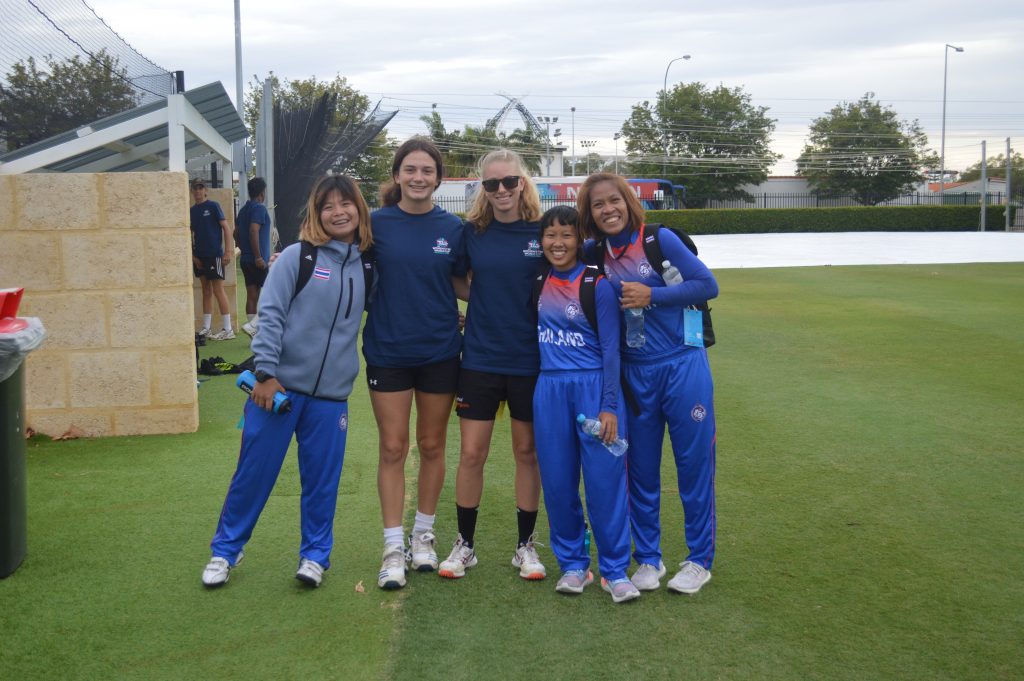
As ever, training ignites several bouts of loud excitement. The girls play some kind of quick-reflex bout of ‘tag’ as a warm up. No one wants to lose.
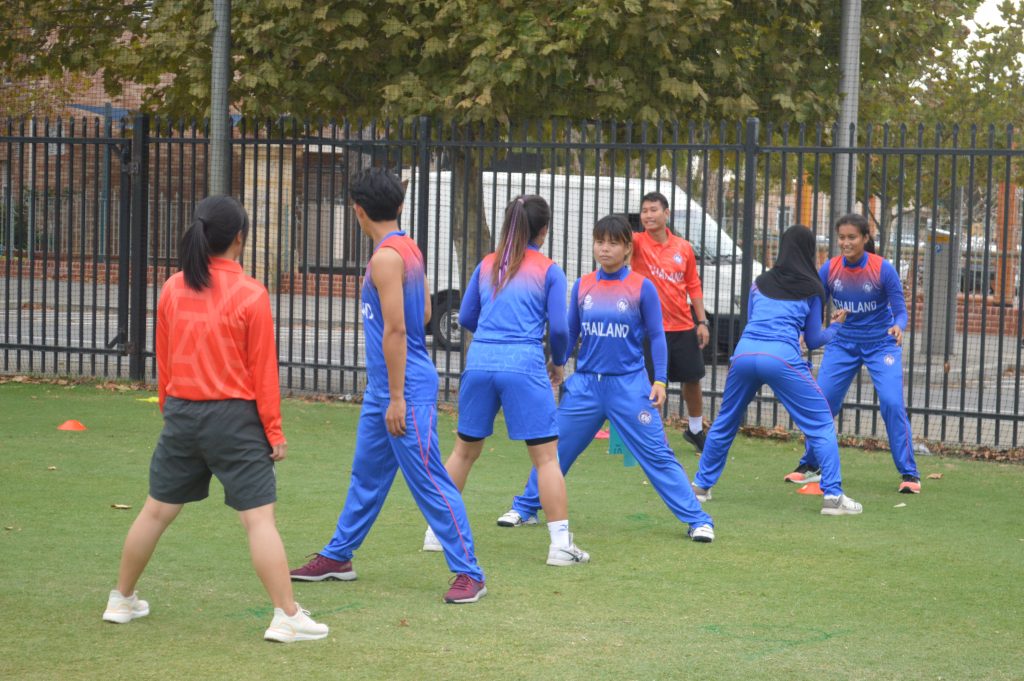
Another moment of note is when the ICC camera-on-wheels (a contraption that looks a bit like Wall-E) catches up with the girls during the fielding session on the turf. Naruemol begins to run at Wall-E, chasing it all over the outfield. The players then decide, in jest, to corner the robot, and surround it, waiting for Wall-E (or more accurately the controller somewhere at the other end of the ground) to make the next move. A moment of collective, light hearted, wit. Everyone is laughing. Even Geoff, our liaison officer, who does not laugh very often. J
These ‘lighter’ moments are demonstrative of something very important about this team in the context of the World Cup. That is the ability to be engrossed in the moment and respond to it with the character and humour. It is, I sense, something that comes naturally, but also helps the players deal with the powder keg of pressure.
How else do the players deal with pressure?
At the post-match press conference, Nattaya Boochatham is asked “what the feeling was like within the team last night (the night before the first game)?”
“A lot of meditation last night, a lot of meditation, playing that imagery, visualizing the positive intent that I want to show with the bat and the ball, the lines I was going to bowl, areas I was going to get my runs. So yeah, I practiced that a lot. And waking up in the morning, just reinforcing probably that thought pattern and being positive coming into today’s game,” she says.
Visualisation is a key means of becoming familiar with your role and intention on the field, almost a way of willing an outcome.
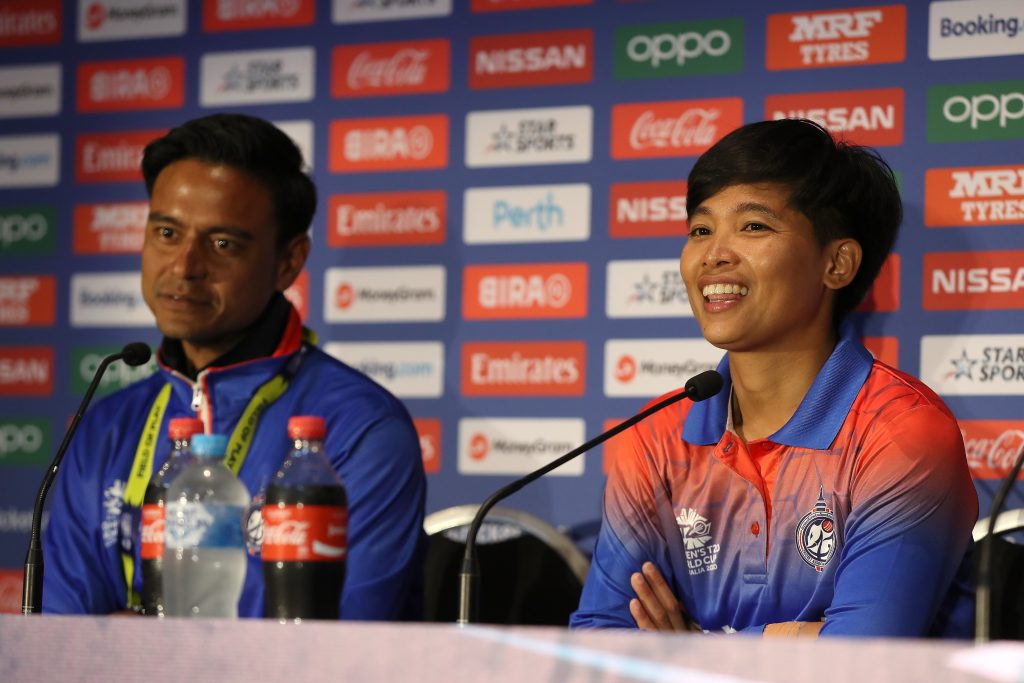
The need for calmness is also something that the team has been working on for well over a year now. As I have written elsewhere, Harshal Pathak has introduced yoga into the team’s preparatory regime. Today he talks about taking a few minutes to breath deeply if nerves come to the fore. He designates one player with the responsibility of reminding the rest to do so.
Pathak also talks specifically about how to deal with the magnitude of the occasion. He outlines the many distractions that will come the playsers’ way on game day – the press, the social media chatter, the crowd, and even the opposition.
“Don’t entertain questions about these topics in your head. What happens to the naughty kid when you ignore him for long enough? He goes away. Try to do the same with all of these distractions. Ignore them and they will go away.”
Training
They say the WACA practice wickets are very similar to what one is likely to find out in the middle. If this is the case, the center is likely to be grassy, seam a fair bit, and even skid.
The players settle into a long training session. The top six batters rotate across a spinners’ net, a fast bowlers’ net, and a mixed net. Specific batters start in the nets most akin to the situation they are likely to encounter in the match. The coach sets specific match scenarios. The batters have targets and the bowlers set their fields.
Nannapat Koncharoenkrai and Naruemol Chaiwai start in the spinners’ net. Chaiwai bats at 4 or 5 and will likely walk in when the spinners are operating. Today she is sweeping with ease, despite the bounce that the spinners are generating.
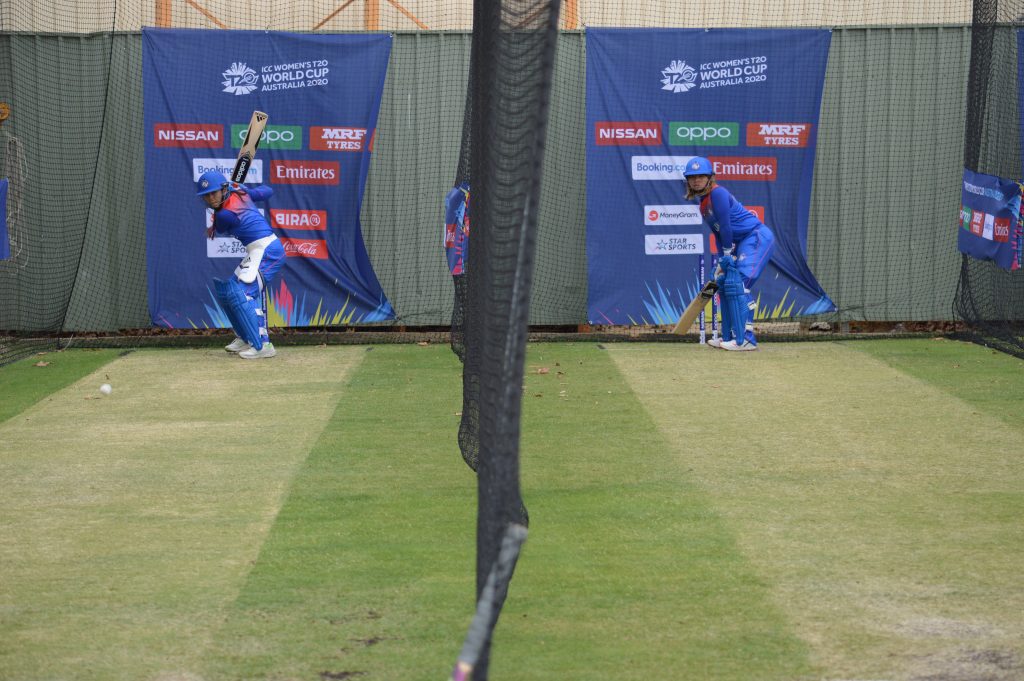
19-year Nannapat also looks in good nick. She times a couple of straight drives to perfection, and is very quick to rock back and either pull or cut. As it turns out, her form in the nets translates into an assured knock of 33 against the Windies.
Once she has the gloves and pads on, Natthakan Chantam is all focus and intensity. None of the wide smiles we are used to seeing in interviews, or even in warm ups. She bats and bats and bats. Across all three nets, then facing the bowling machines, and then back again for throw-downs, focusing on the cut and pull. She will open the batting on perhaps the quickest, bounciest deck of them all.
She has been in exquisite form over the last six weeks, belting 82 against India A, and 60 against Bangladesh, both in Patna. But as we hear time and time again from the coaching staff, what matters is what the players do on the pitch at the world cup.
The team’s key bowlers assemble at a far net, where they bowl at a stump. Line and length. Accuracy. Perhaps the return to these fundamentals is a response to the wayward start against New Zealand in the warm up game. The team knows that their ability to bowl with consistent accuracy will lay the platform for what they do best on the field: strangle opposition with dots, invite mistakes, effect run outs.
Anyone who did follow Thailand’s match against the West Indies will know that the Windies batting power play was a glimpse into the Thailand brand of cricket: strangle the opposition with dots, invite mistakes, effect run outs. It is actually something the men’s junior teams have been effective at doing over the years, albeit against much less illustrious opposition.
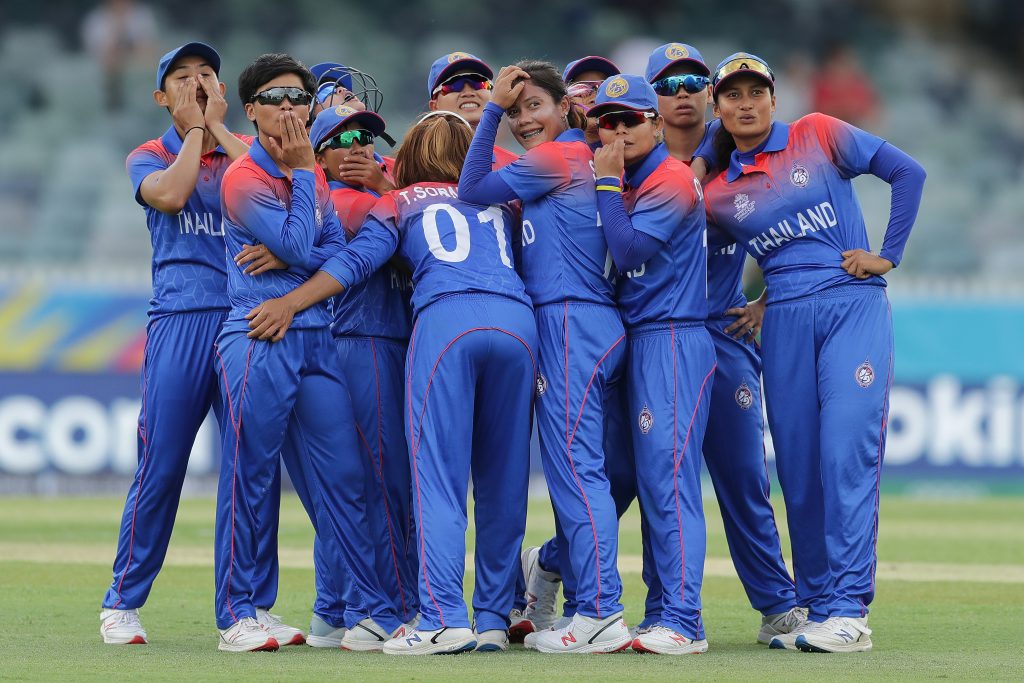
The fielding session out on the WACA is high intensity. Every thing happens in short bursts, and no ball is hit straight at the players. A particular highlight is watching the assistant coach hit flat catches at a group of players standing just inside the boundary line, and seeing them leap a meter or two to effect the catch.
Team meeting
It goes for an hour and a half. Some of the tactical planning has already been complete in a separate meeting between the coaches and the captain. Still, they discuss specific fields for specific bowlers at specific points of the game.
Sornnarin and Harshal have a robust discussion about the efficacy of a new field that the team is yet to try. Harshal appears to suggest that this field will dry up the runs, provided the bowlers hit the slightly fuller length (in the context of the WACA) required to generate bounce.
I wish I could recount it verbatim, but he makes an important point about bowlers challenging themselves to bowl fuller by leaving deep point vacant. If you know you do not have protection, your mind works harder to avoid bowling short, so the logic goes. He trusts the bowlers to execute.
It is a specific discussion incorporating tactics, mental processes, and confidence building all in one. It is a discussion befitting of an international team.
Another key facet of the meeting is that players are encouraged to take part in the meeting. It is not a lecture, rather a series of statements or questions to which players are invited to respond.
For example, players are asked why it might be important to employ a catching short fine leg to a batter who likes the paddle scoop…why is this a good idea in tactical and technical terms?
Harshal rounds off the discussion with sage advice. You can only execute your skills if you play courageously. Do not let your country down by succumbing to fear of the occasion, the opposition, or the crowd.
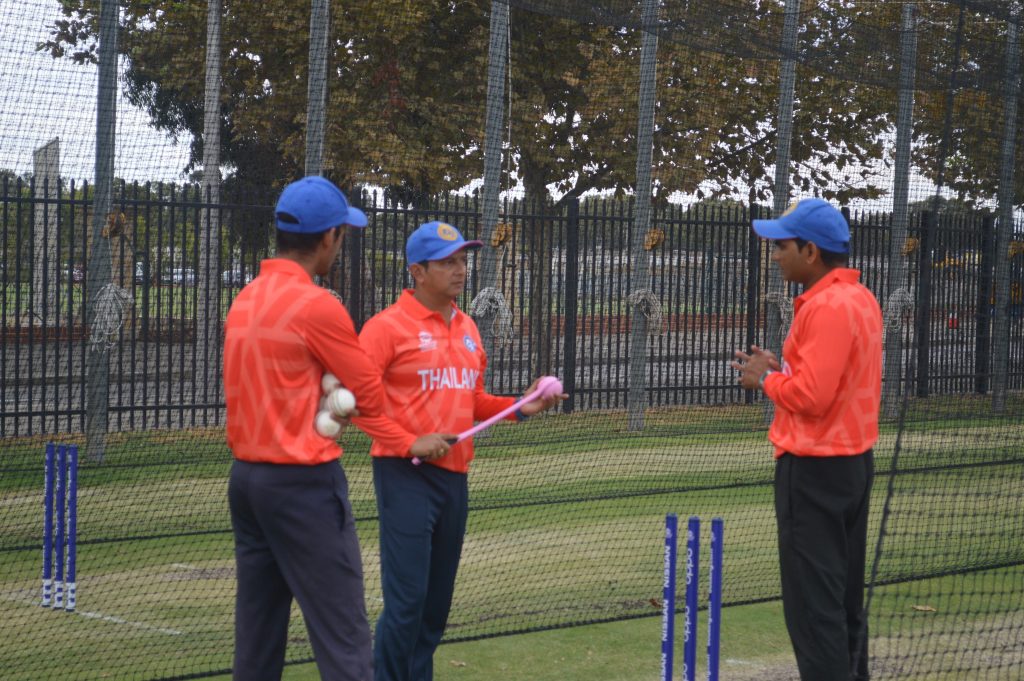
Game Day
Ever arrive at a job interview 20 minutes before your designated interview time?
You find yourself sitting in a waiting room nervous as hell. You have little to do in this waiting period and so fill the time by drinking too much water, picking up pop magazines from the coffee table but not digesting anything, and tearing bits off the disposable paper cups.
That is how I feel on game day.
I wonder how the players are feeling. We do not leave for the ground until after noon. So I assume it is a long morning for them. Even after we get to the ground – at about 12:30 PM – it feels like a long wait until the 3 PM start.
There are no outward signs of nerves on the bus to the stadium, even less so once the players arrive at the ground. There is now no more time to think because there is much to do – getting settled in the changing rooms, taping knees or ankles, doing warm-ups, and, at this level, pre-match media obligations.
Once the routines begin, everyone is almost on auto-pilot until the get onto the field. The rest is, indeed, history.

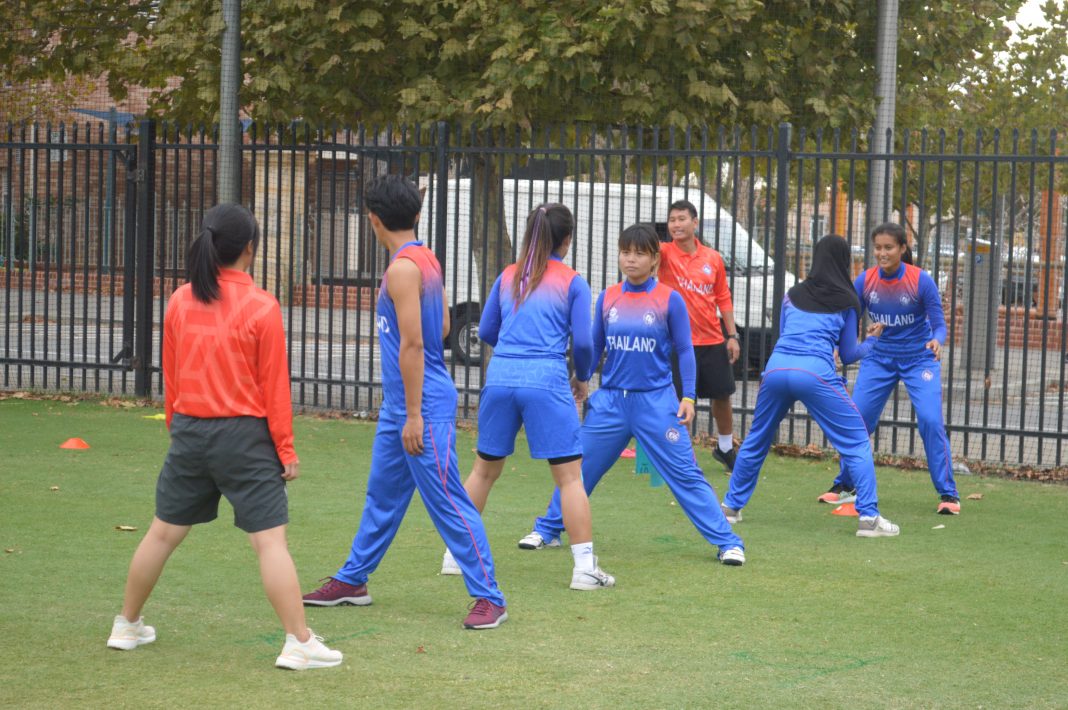


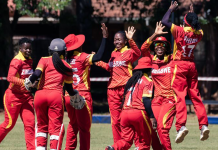

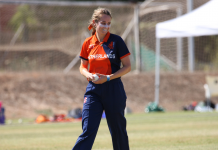

Great article and analysis